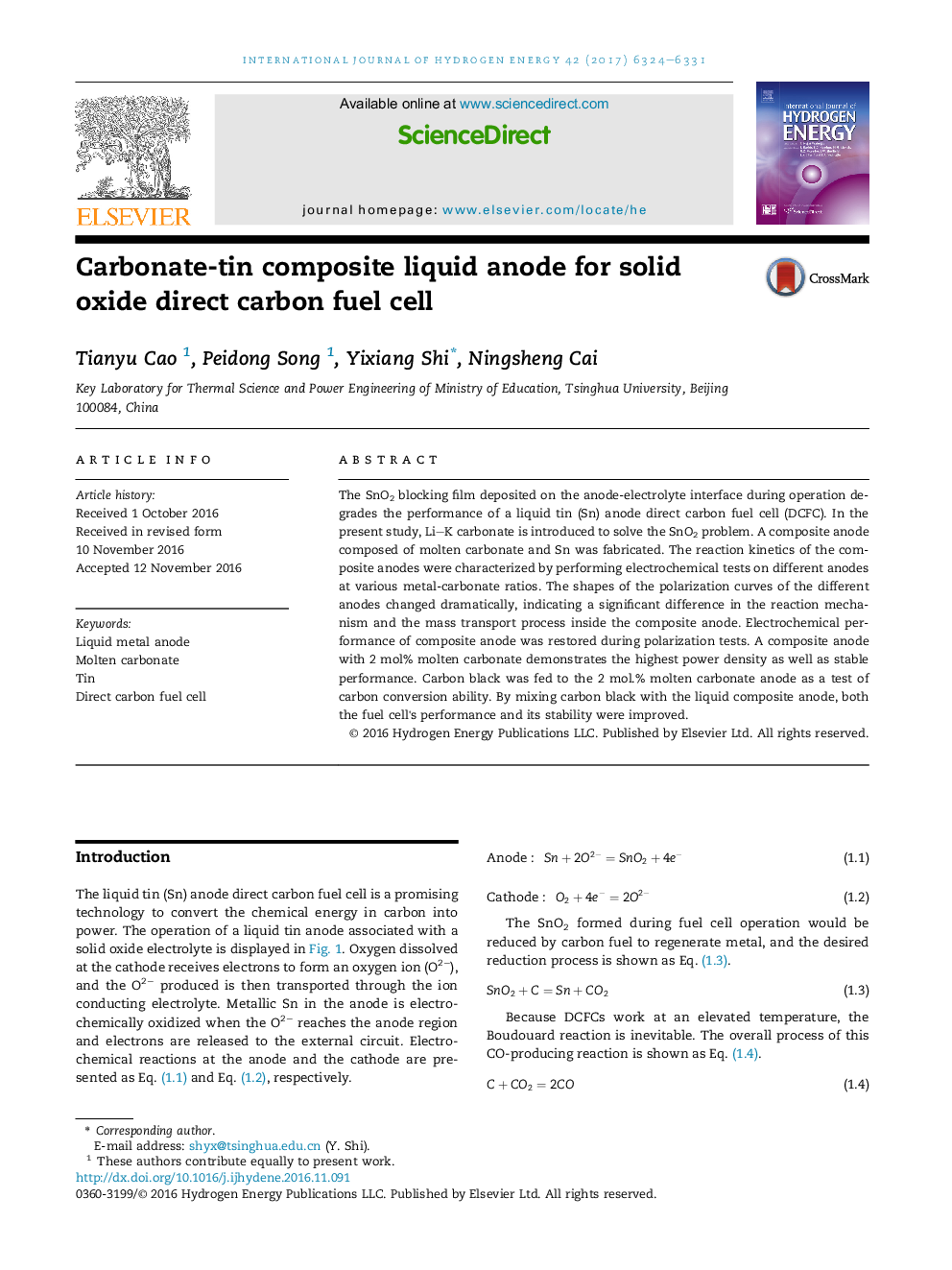| Article ID | Journal | Published Year | Pages | File Type |
|---|---|---|---|---|
| 5146839 | International Journal of Hydrogen Energy | 2017 | 8 Pages |
Abstract
The SnO2 blocking film deposited on the anode-electrolyte interface during operation degrades the performance of a liquid tin (Sn) anode direct carbon fuel cell (DCFC). In the present study, Li-K carbonate is introduced to solve the SnO2 problem. A composite anode composed of molten carbonate and Sn was fabricated. The reaction kinetics of the composite anodes were characterized by performing electrochemical tests on different anodes at various metal-carbonate ratios. The shapes of the polarization curves of the different anodes changed dramatically, indicating a significant difference in the reaction mechanism and the mass transport process inside the composite anode. Electrochemical performance of composite anode was restored during polarization tests. A composite anode with 2Â mol% molten carbonate demonstrates the highest power density as well as stable performance. Carbon black was fed to the 2Â mol.% molten carbonate anode as a test of carbon conversion ability. By mixing carbon black with the liquid composite anode, both the fuel cell's performance and its stability were improved.
Related Topics
Physical Sciences and Engineering
Chemistry
Electrochemistry
Authors
Tianyu Cao, Peidong Song, Yixiang Shi, Ningsheng Cai,
